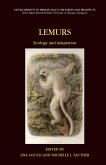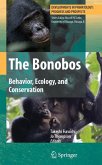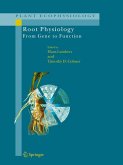This volume includes up-to-date field research on the longest-studied and best known of lemur species. It contains articles by scientists from America, Europe, Japan and Madagascar, who combine their knowledge to describe an animal which is unique among primates, a lemur whose group structure resembles that of many monkeys, but whose behavior does not. Ringtailed lemurs, Lemur catta, are female dominant, prone to evict their cousins from social groups, and live at population densities ten times greater than monkeys. The volume treats ecology, behavior, and physiology to present current research on this unique primate. The papers review past research and add new dimensions of research related to nutrition, health, hormonal biology, plant ecology, behavioral ecology, and demography of Lemur catta.
This book is a truly international collaboration, with editors based on four con- nents and first authors from Canada, France, Japan, Madagascar, the United Kingdom, and the United States. Clearly, there is something attractive about studying Lemur catta, the ringtailed lemur. Perhaps it is the lemurs themselves! Why study ringtailed lemurs? Because lemurs are a separate radiation of p- mates from the monkeys, apes, and humans. Because ringtails live in the largest social groups of any known lemur and therefore offer the closest comparison with other social primates, including ourselves. And also because ringtails have become the flagship species of Madagascar. Some 70 species or subspecies of lemurs inhabit Madagascar. Each kind has its own fascinating story, but ringtails are the ones that everyone thinks they know. That black-and-white tail adorns tourist brochures and school notebooks and banknotes. All the same, after 40 years of field study, we don't know nearly enough. In this book, we make a first estimate on how many might be alive today, but we do not know how many ri- tailed lemurs and how many southern forests will survive. This book explores part of what we do know. Its four sections are (I) Distribution: Ringtailed Lemurs in Madagascar, (II) Ringtails and Their Forests: Feeding and Ranging Behavior, (III) Social Behavior Within and Between Troops, and finally (IV) Health and Disease. Of course, all these issues are int- related.
Hinweis: Dieser Artikel kann nur an eine deutsche Lieferadresse ausgeliefert werden.
This book is a truly international collaboration, with editors based on four con- nents and first authors from Canada, France, Japan, Madagascar, the United Kingdom, and the United States. Clearly, there is something attractive about studying Lemur catta, the ringtailed lemur. Perhaps it is the lemurs themselves! Why study ringtailed lemurs? Because lemurs are a separate radiation of p- mates from the monkeys, apes, and humans. Because ringtails live in the largest social groups of any known lemur and therefore offer the closest comparison with other social primates, including ourselves. And also because ringtails have become the flagship species of Madagascar. Some 70 species or subspecies of lemurs inhabit Madagascar. Each kind has its own fascinating story, but ringtails are the ones that everyone thinks they know. That black-and-white tail adorns tourist brochures and school notebooks and banknotes. All the same, after 40 years of field study, we don't know nearly enough. In this book, we make a first estimate on how many might be alive today, but we do not know how many ri- tailed lemurs and how many southern forests will survive. This book explores part of what we do know. Its four sections are (I) Distribution: Ringtailed Lemurs in Madagascar, (II) Ringtails and Their Forests: Feeding and Ranging Behavior, (III) Social Behavior Within and Between Troops, and finally (IV) Health and Disease. Of course, all these issues are int- related.
Hinweis: Dieser Artikel kann nur an eine deutsche Lieferadresse ausgeliefert werden.
From the reviews:
"I can point ... this book as the perfect place to get 'cool stuff' on ringtailed lemurs. ... this book is a must-have and instant classic for any existing or budding researchers with an interest in ringtailed lemurs. The data will be of interest to anyone conducting meta-analysis studies of primate diets. ... the book will find its way onto the bookshelves of many professional primatologists and mammologists. I also think that the book will be of interest to amateur naturalists and students ... ." (Shawn M. Lehman, Journal of Mammalian Evolution, Vol. 15, 2008)
"I can point ... this book as the perfect place to get 'cool stuff' on ringtailed lemurs. ... this book is a must-have and instant classic for any existing or budding researchers with an interest in ringtailed lemurs. The data will be of interest to anyone conducting meta-analysis studies of primate diets. ... the book will find its way onto the bookshelves of many professional primatologists and mammologists. I also think that the book will be of interest to amateur naturalists and students ... ." (Shawn M. Lehman, Journal of Mammalian Evolution, Vol. 15, 2008)








